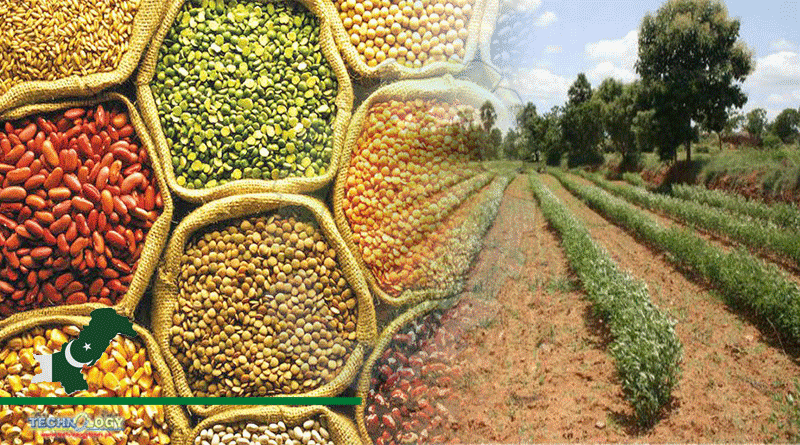With more than 20,000 species, the Fabaceae family, sometimes referred to as the legume, pea, or bean family, is the third-largest group of flowering plants.

With more than 20,000 species, the Fabaceae family, sometimes referred to as the legume, pea, or bean family, is the third-largest group of flowering plants. Legumes of the Fabaceae family constitute a wholesome component of diets all around the world. They are an affordable source of fiber, complex carbohydrates, protein, and vitamins.
The phrases “legumes,” “pulses,” and “beans” have different meanings even though they are sometimes used interchangeably. Any member of the Fabaceae family of plants, including its leaves, stems, and pods, is referred to as a legume.
The edible seed of a legume plant is known as a pulse. Peas, lentils, and beans are examples of pulses. As an illustration, a pea pod is a legume, while the pea within is a pulse. In agricultural uses (like cover crops), the entire bean plant is frequently employed.
Nutritional Values of Pulses:
- Calories: 353 (raw) or 165 (cooked)
- Protein: 24.63 g (raw) or 9.02 g (cooked)
- Fat: 1.06 g (raw) or 6.04 g (cooked)
- Carbs: 60.08 g (raw) or 18.54 g (cooked)
- Fiber: 30.5 g (raw) or 7.9 g (cooked)
These are the values per 100g of lentils.
Pulses are high in fiber, protein, and carbohydrates.
Nutritional value of lentils:
- Calories: 353 (raw) or 165 (cooked)
- Protein: 24.63 g (raw) or 9.02 g (cooked)
- Fat: 1.06 g (raw) or 6.04 g (cooked)
- Carbs: 60.08 g (raw) or 18.54 g (cooked)
- Fiber: 30.5 g (raw) or 7.9 g (cooked)
These are the values per 100g of lentils.
Nutritional value of chickpeas:
Fat: 3.8g
Sodium: 322mg
Carbohydrates: 35g
Fiber: 9.6g
Sugars: 6.5
Vitamin B6: 0.18mg
Folate: 62.3µg
Calcium: 65.4mg
Types of lentils:
There are different types of lentils:
Brown: These are the most popular varieties. They are excellent in stews and soups, have an earthy flavour, and keep their shape nicely while cooked.
Puy: These are from the Le Puy region of France. They have a peppery flavour and are around one-third the size of green lentils but are comparable in color.
Green: These come in a variety of sizes and are typically a less expensive alternative to puy lentils in recipes.
Red and yellow: These split lentils cook rapidly. They taste somewhat sweet and nutty, and they are excellent for making dal.
Beluga: These are tiny, black lentils that resemble caviar in appearance.
Types of chickpeas:
Desi and Kabuli chickpeas are the two varieties. Desi has a more rugged covering and smaller, darker seeds. Kabuli is a smoother-coated, bigger bean with a lighter hue. Green, black, brown, and red are some of the colours of chickpeas, although beige is the most widely vet a buttery texture. used and recognised shade. They taste nutty.
Health Benefits of Pulses:
Pulses have various health benefits.
Good for cardiovascular diseases
Good for diabetic patients
Lower the risk of diabetes, heart attacks, and strokes. Good source of protein. Rich in phytochemicals and saponins.
Fiber binds toxins and cholesterol in the gut, removing them from the body. Increases stool volume and transit.
Iron helps in the transport of oxygen in the body. A lack of iron causes fatigue in the body.
Conclusion:
Pulses are a rich source of protein, micronutrients, and carbohydrates and a good alternative to meat for poor people. The various health benefits of pulses are also there.
We should promote the use and growth of pulses. As it is a good and cheap source of protein and some vital elements. For those who cannot afford expensive meat nowadays, pulses are a good alternative. Iron deficiency in children can be fulfilled up to some extent by the use of pulses. Lack of iron causes fatigue in the body.
Fibre, which is also important for body functioning, is also present in pulses, and it binds with toxin and removes cholesterol from the gut. It is also valuable for diabetic patients and heart patients, so we should promote its usage. February 10 is World Pulse Day for awareness and promotion of pulses all over the world.